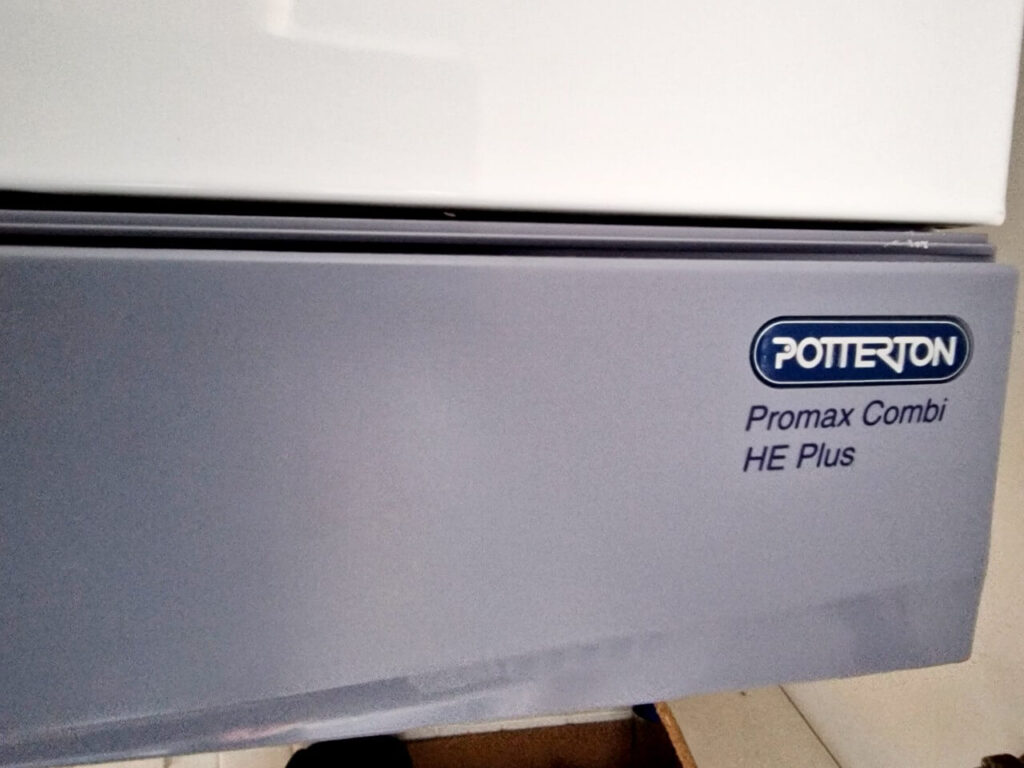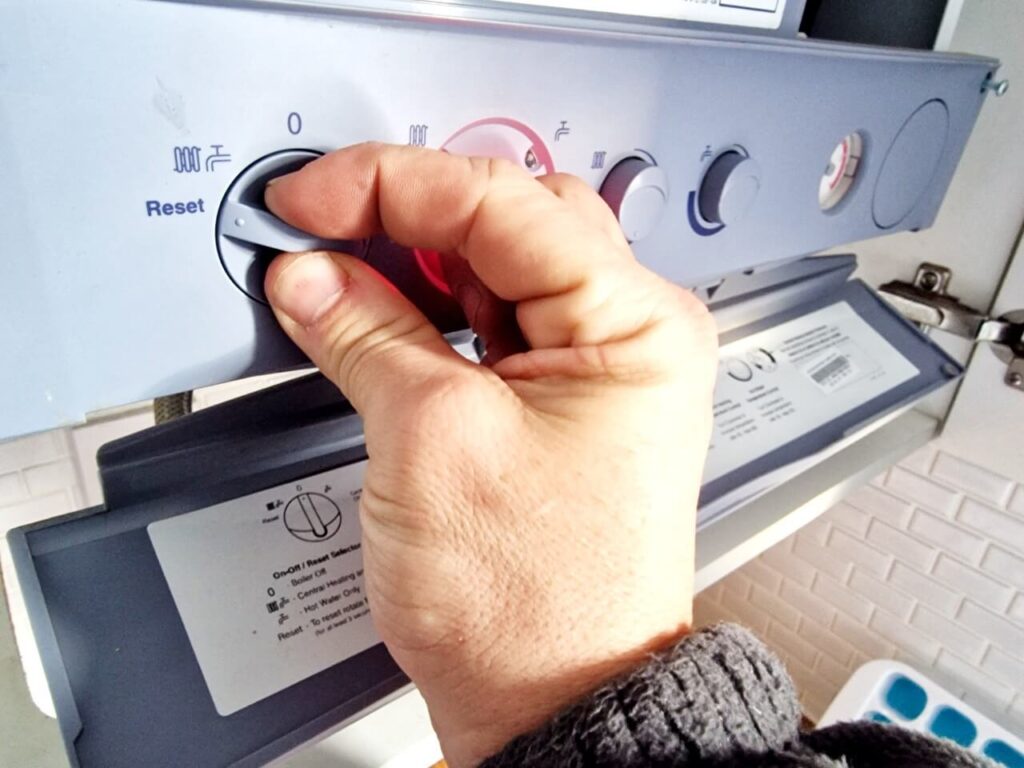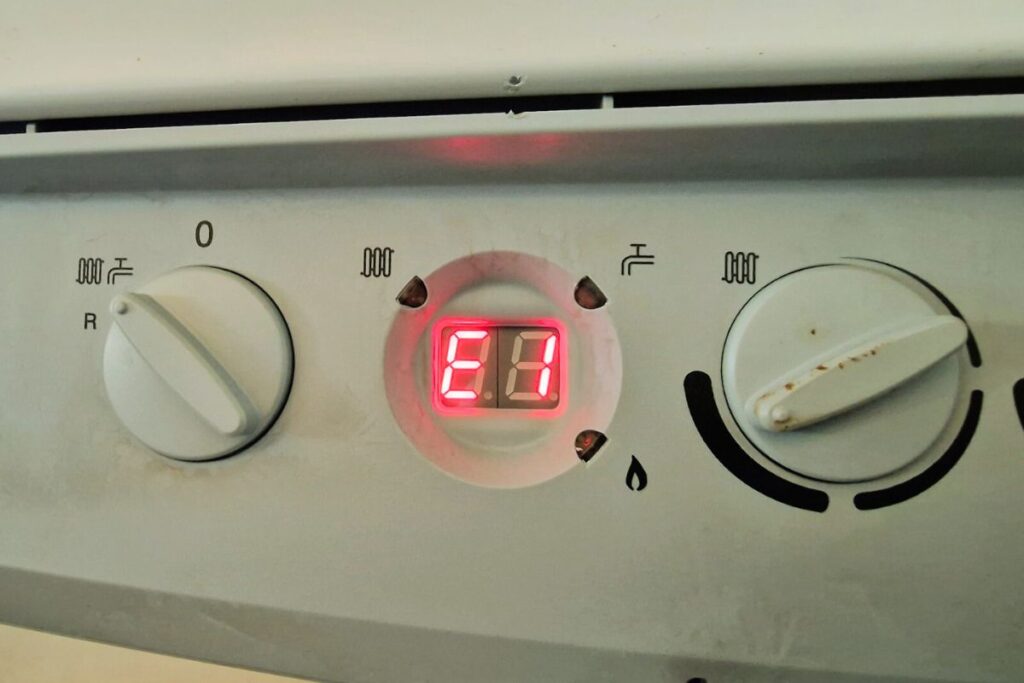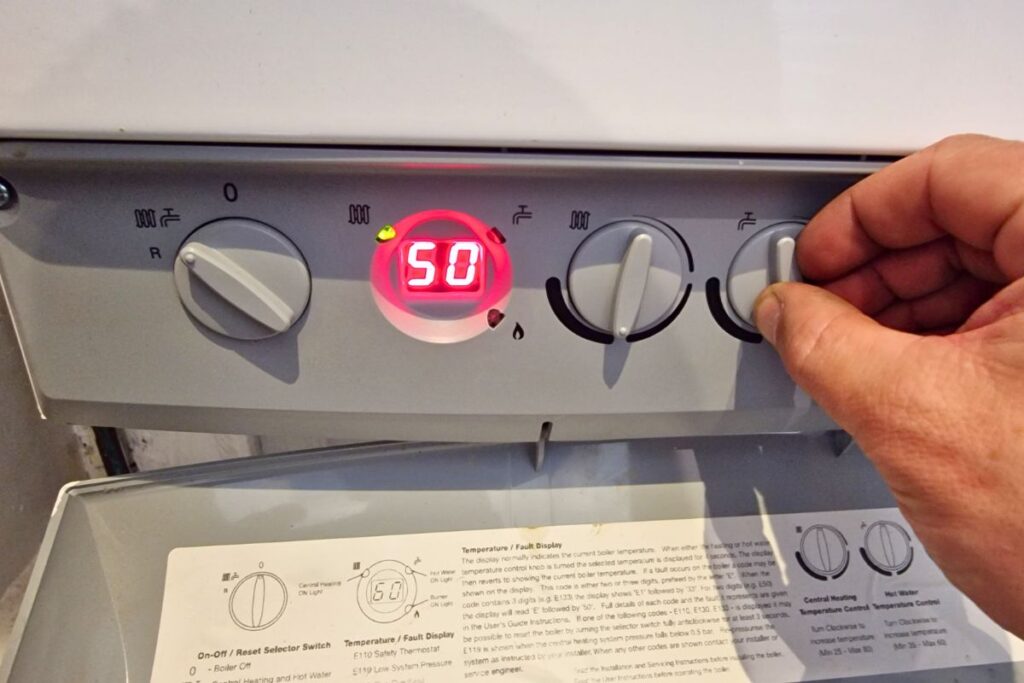Last updated on June 8th, 2024
When your Potterton boiler pressure drops too low, the boiler will stop working which means you will have no heating or hot water.
To repressurise a boiler, you must add more water (pressure) to your heating system from the cold water supply via a filling loop.
I have been repairing boilers and heating systems for over a decade, and have fixed many boiler pressure problems.
What Should the Pressure Be?
The pressure on a Potterton boiler should be between 1 and 1.5 bar when the central heating is off and the radiators are cold.
The pressure rises when the heating is on, so you will not get the proper reading until it has cooled down.
If it is below 1 bar, you should top the pressure up. If you have to keep topping the pressure up, you have a problem that needs to be fixed.
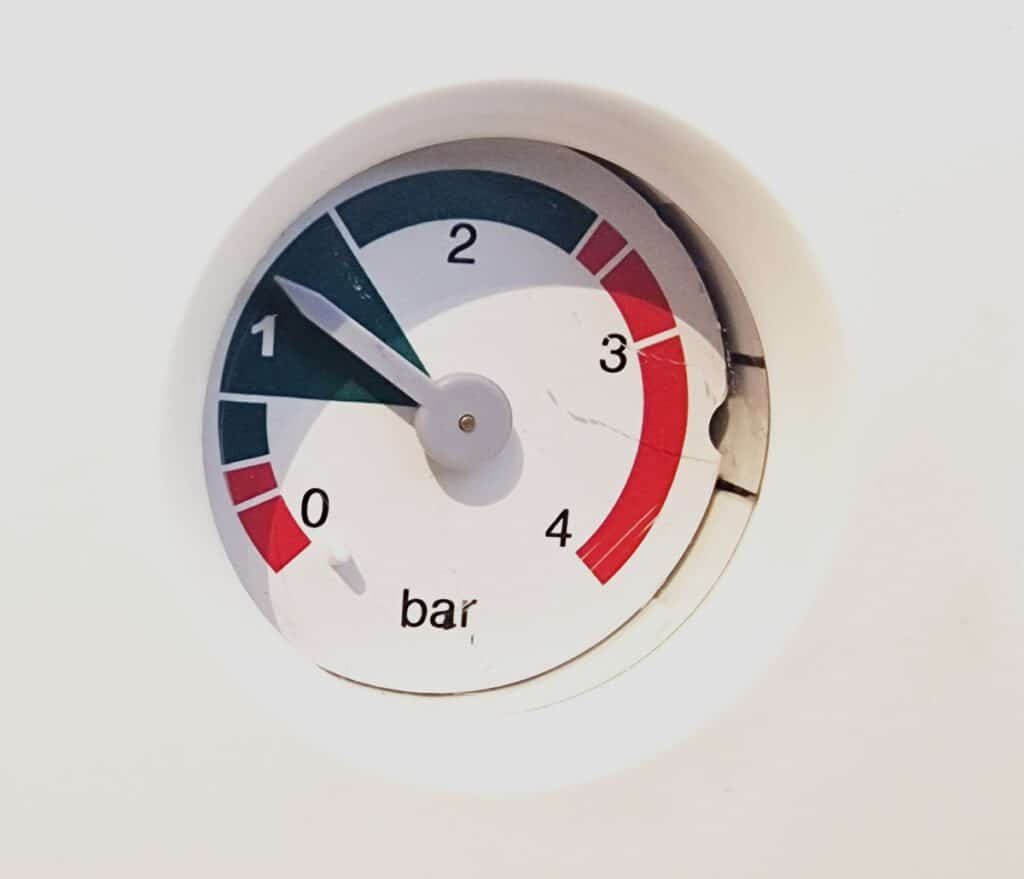
How to Repressurise a Potterton Boiler
If your Potterton boiler pressure drops below 1 bar you should increase the pressure.
To increase the pressure you must:
- Open one filling loop valve fully
- Open the other valve slowly until you can hear the water
- When the pressure has reached 1 to 1.5 bar, close both valves
- Reset the boiler (if needed)
- Turn the heating on
Do not open both filling loop valves fully straight away as the water pressure in the house might be high and cause the pressure to shoot up too much.
A filling loop will be built in on the bottom of your boiler on most modern and small combi boilers, but it could also be on the pipework.
Usually, this is below the boiler but there could be an external flexible filling loop anywhere on the system, sometimes hidden away in cupboards or behind boxing.
There should be one of these types of boiler filling loops under your Potterton boiler:
- Two black or blue lever-type handles: These will need turning a quarter turn each to open and close.
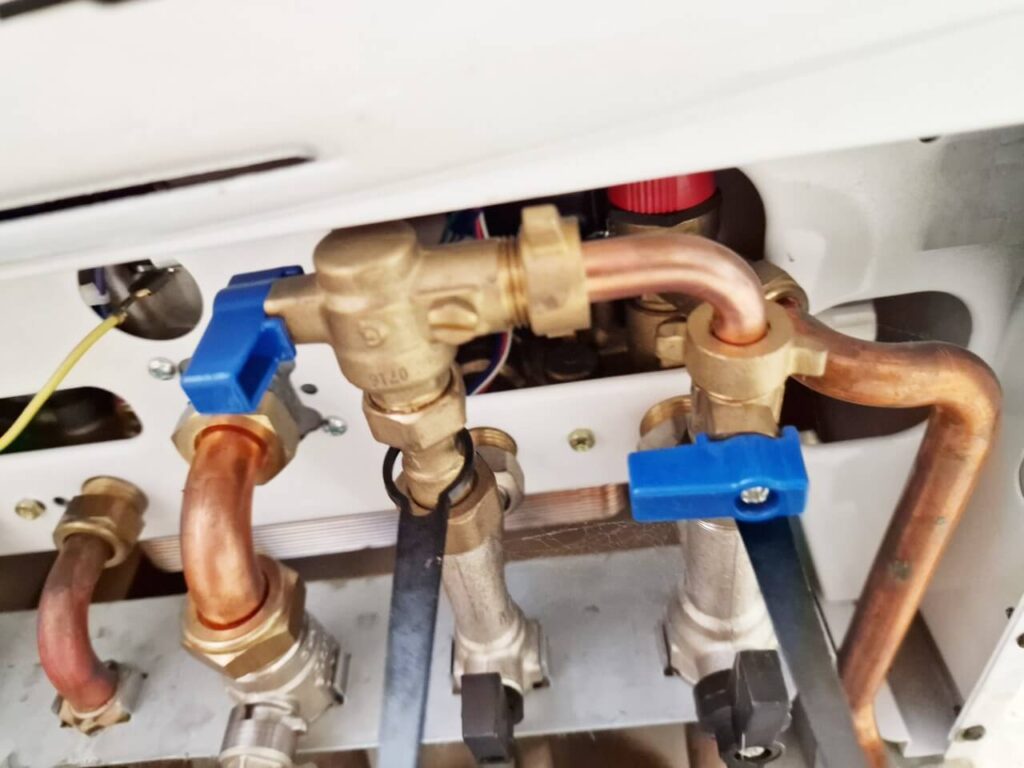
- Easy-Fill green handle: This will simply need to be pulled and then released to stop filling.
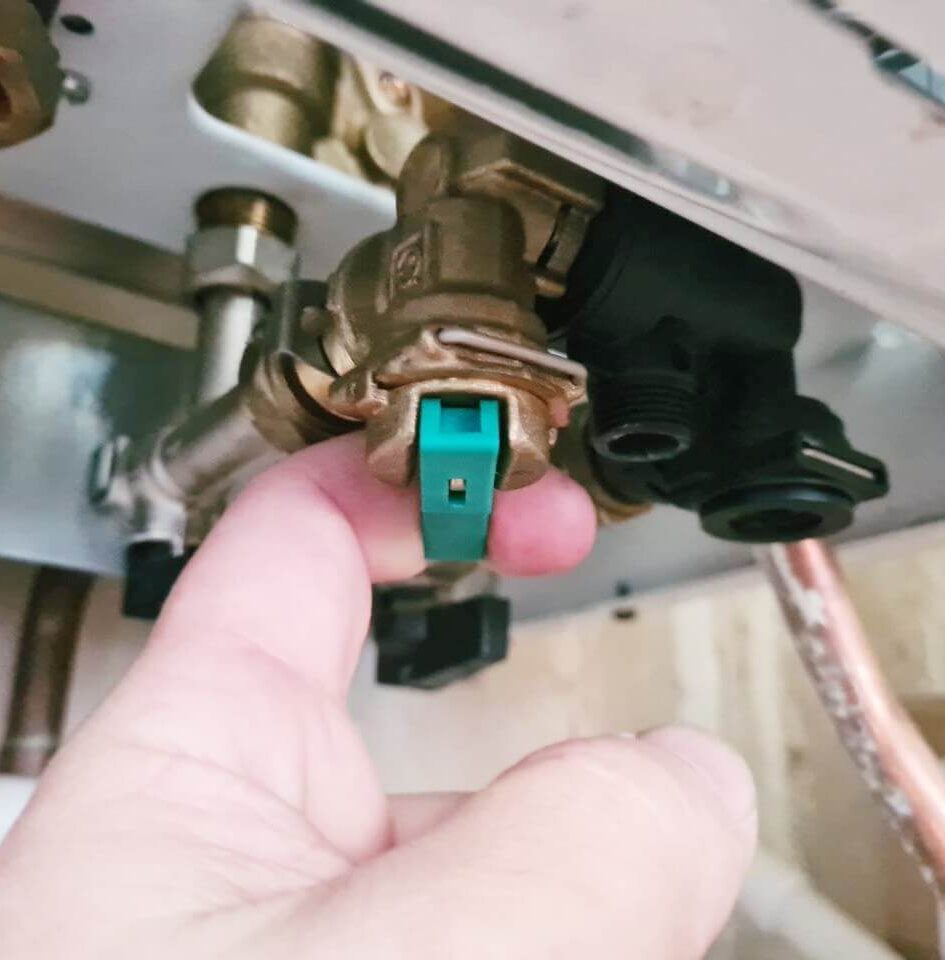
- Two knobs: These will need turning anti-clockwise like taps to open, and fully clockwise to close.
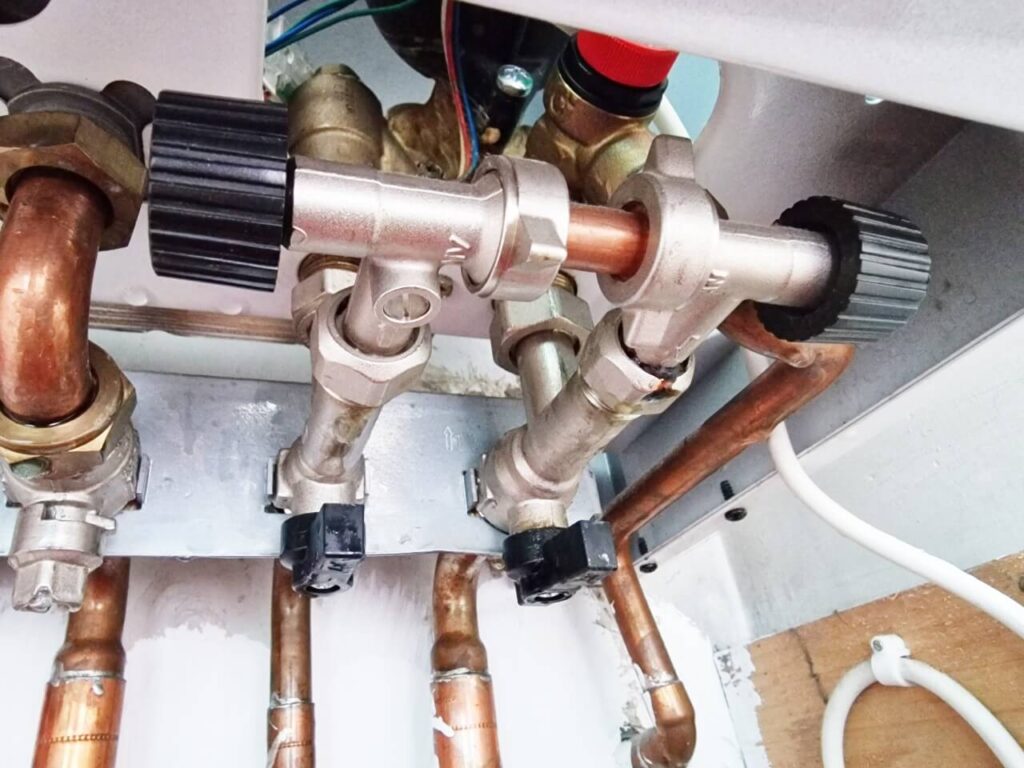
Boiler Valve Positions
All the Potterton boiler valve positions below are fully open.
- Black Valves: All 3 black handle valves in the photo are open which they are meant to be at all times. They are (from left to right) the heating flow, cold water inlet, and heating return valve.
- Blue Valves: The blue handle valves are the filling loop valves which are fully open in the photo and are increasing the pressure. They should be closed unless repressurising the boiler.
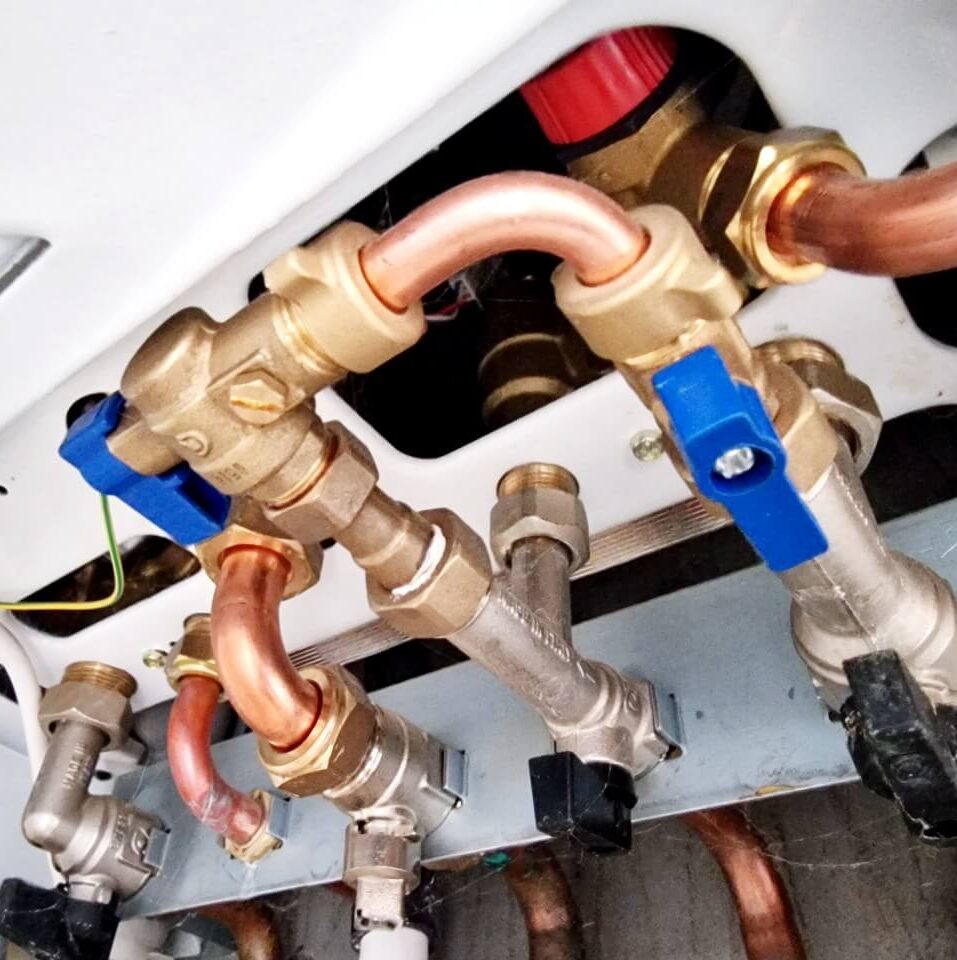
Boiler Losing Pressure Overnight
If your boiler is losing pressure overnight, you will have a leak somewhere on your heating system, or the pressure relief valve is letting the water out.
To find out which it is, you can tie a carrier bag to the end of the copper blow-off pipe outside.
If your boiler has lost pressure overnight again, you should check the bag to see if it’s wet and if it is, that means the pressure relief valve is letting the water out.
This is most likely an expansion vessel problem. You will need to recharge the expansion vessel or replace it if the diaphragm inside is split.
If the bag is dry after losing pressure overnight, you must have a leak on the central heating system which will need to be found and fixed.
A leak could be anywhere on the full system, boiler, radiators, or on a pipe under the floor.
How Often Should You Need to Repressurise?
If you need to repressurise your boiler often you have a problem that you need to get fixed. A system with a pressure gauge is a sealed pressurised system so you shouldn’t need to repressurise it at all.
If the pressure drops, it means the water is getting out which should not be happening.
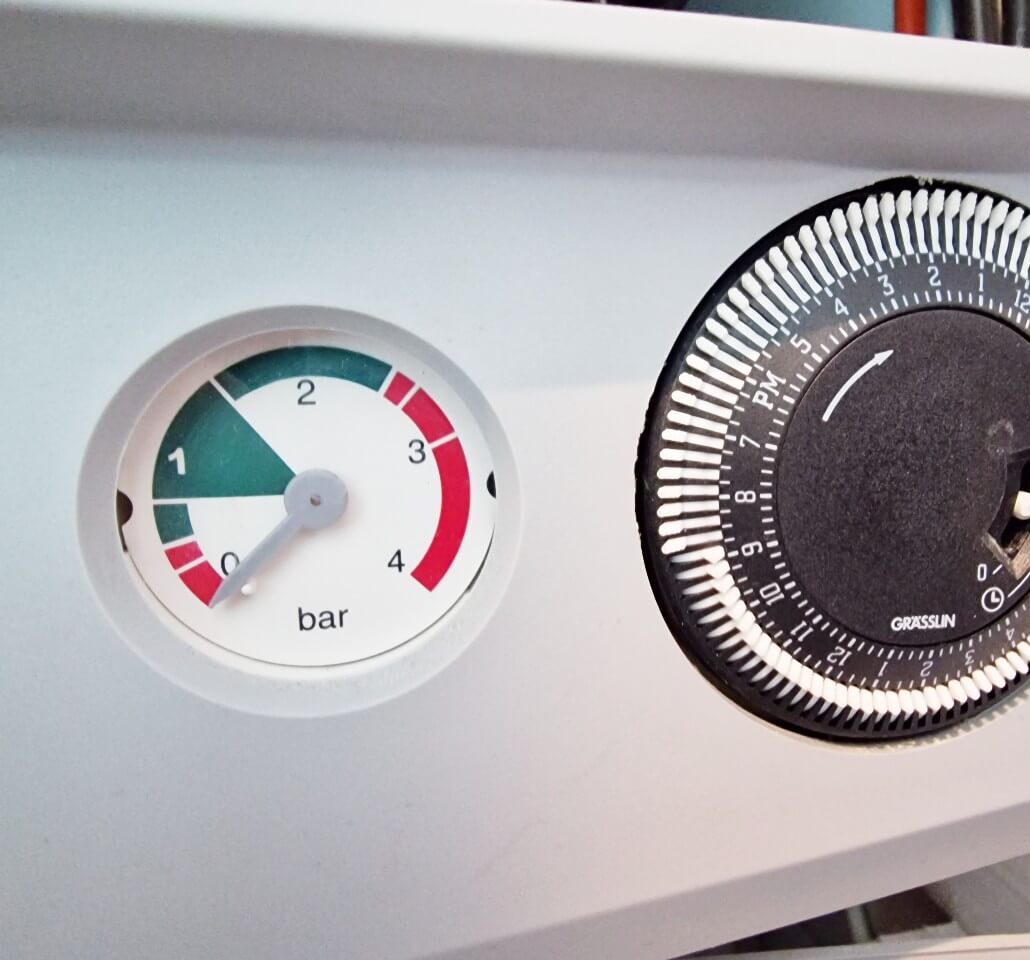
If you need to repressurise your boiler once or twice a year I wouldn’t worry about it as it’s such a small leak that it’s barely noticeable.
Boilers are sometimes undersized when fitted and are not large enough to cope with a large house’s central heating system.
This means the expansion vessel in the boiler might not be big enough and can cause problems with the pressure.
Getting the best combi boiler for a large house is very important, but adding an external expansion vessel that is large enough for the system is also an option rather than upgrading to a bigger boiler.
Boiler Pressure Too High
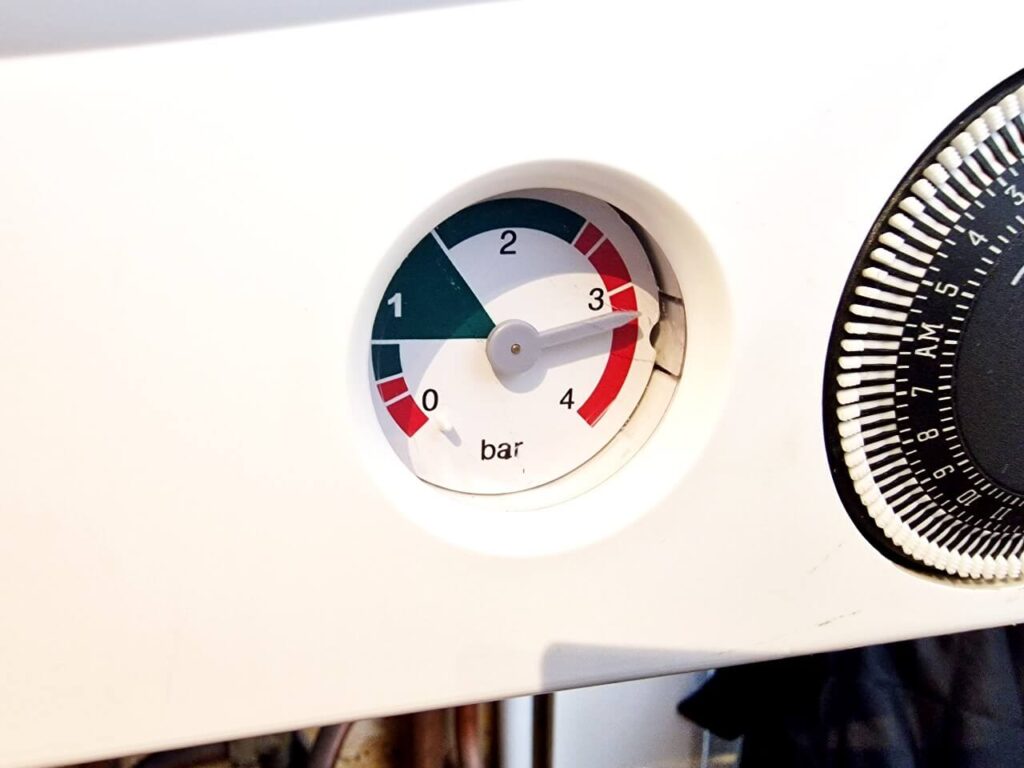
Your Potterton boiler pressure is too high most likely for one of these reasons:
- Somebody repressurised the boiler too much: Reduce pressure in the boiler by letting water out
- The expansion vessel has lost air or the diaphragm inside is split: Recharge or replace the expansion vessel
- The filling loop is not closed fully or damaged: Close the filling loop fully or replace it
- Pinhole leak on plate heat exchanger on a combi boiler: Replace the plate heat exchanger
How to Release Pressure
Knowing how to release pressure might save you from some boiler problems.
If you repressurise a boiler too much and cause the pressure to go too high, you will need to release the pressure. There are a few ways to release the pressure on a boiler.
Here are my go-to ways when out on boiler repair jobs:
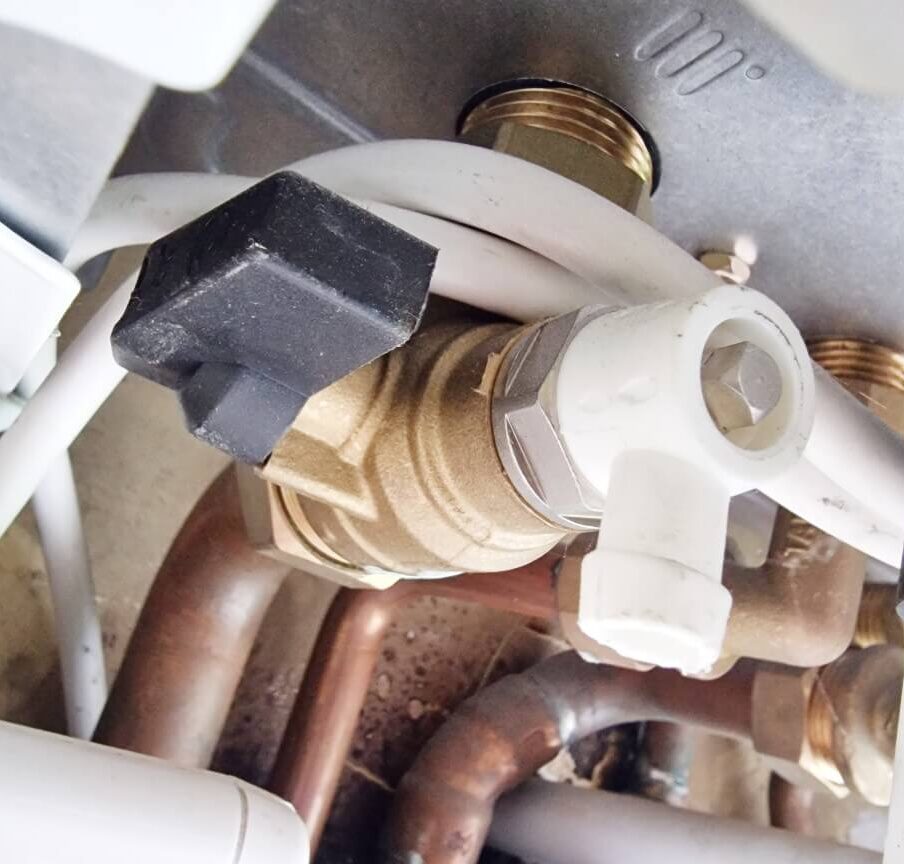
- Open a drain-off valve on the boiler or central heating system with a hose attached and let the pressure drop
- Bleed a radiator from a bleed valve and let the water squirt out into a bucket. This can take a while for the pressure to drop
- Open the pressure relief valve on the boiler by turning the red plastic head
- Crack a nut on the boiler heating pipes or a radiator valve and catch the water in a tub
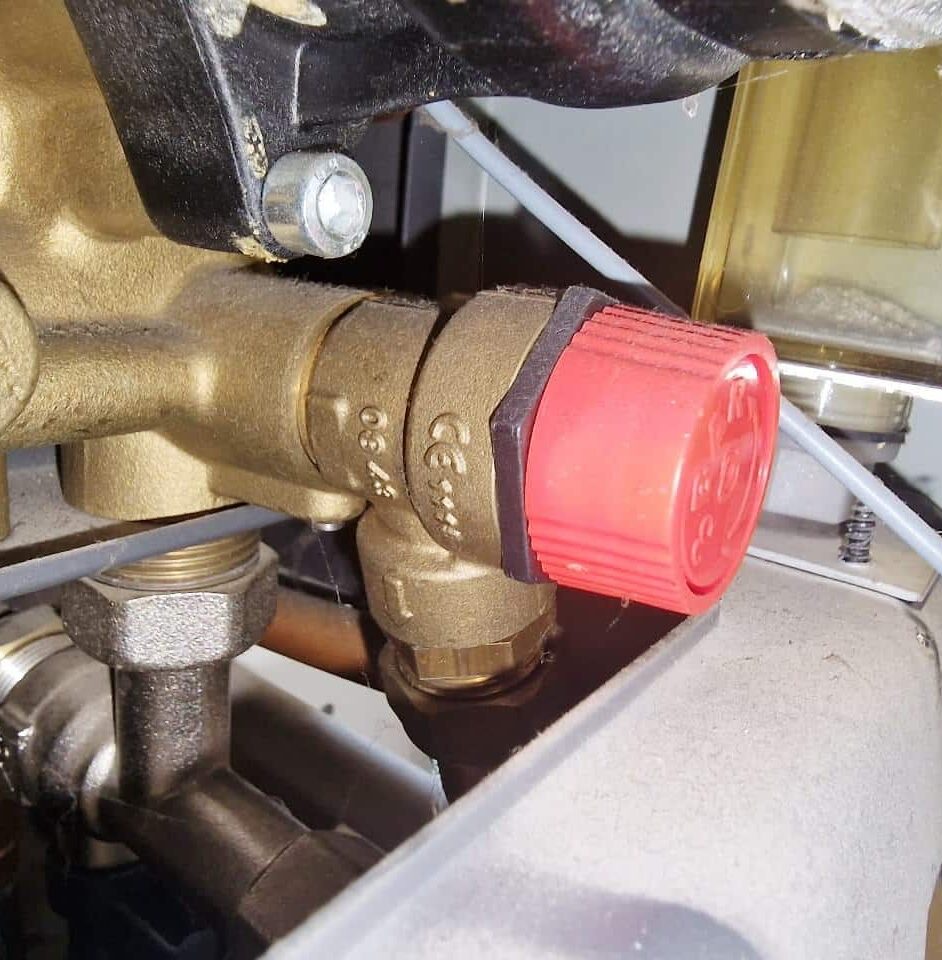
Potterton Boiler Guides
You may also be interested in:
Summary
It’s good to know for sure what the problem is when your boiler is not working but the first thing you need to check is the pressure gauge.
If the pressure gauge is reading zero (or close to zero), your boiler needs to be repressurised to get it working again.
Repressurising a Potterton boiler is an easy job. It can save you from having to pay a plumber to do such an easy task.
If you have to keep repressurising your boiler you should get that problem found and fixed as soon as possible.
Feel free to ask me any questions in the comment section below and I’ll try my best to help.
Please share this post if you find it helpful.
FAQs
Can you repressurise a Potterton boiler by yourself?
Yes. You can repressurise a boiler by yourself, and you should learn how to repressurise a combi boiler if you don’t already know.
Some boilers can be tricky to repressurise but most are very simple.
What causes a Potterton boiler to lose pressure?
There are many causes for a Potterton boiler to lose pressure. The most common cause of a Potterton boiler losing pressure is a leak, this could be on the boiler or anywhere on the central heating system.
Another cause could be the expansion vessel has lost its air and needs to be recharged or replaced.
The pressure relief valve could also be letting by. Or, the filling loop on the Potterton boiler could be slightly open or damaged.
Do I need to turn my boiler off to repressurise?
No, you do need to turn your boiler off to repressurise.
You should ensure the heating is turned off before repressurising the boiler as it will sometimes fire up as soon as it reaches the minimum working pressure.
This can cause the pressure gauge to move around so you don’t get an accurate reading but it isn’t a big deal.
How do I increase the pressure on my Potterton boiler?
To increase the pressure on your Potterton boiler you must add water to the heating system using a filling loop.
The filling loop should be under the boiler on a combi or could be elsewhere on the system if it’s not a combi.
You must open both valves on the filling loop (or one if it only has one) to increase the pressure then close both valves when it reaches 1 bar on the pressure gauge.



